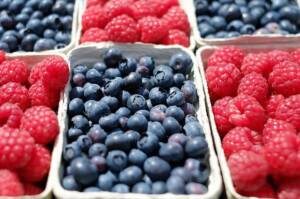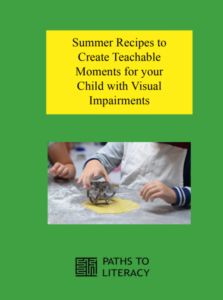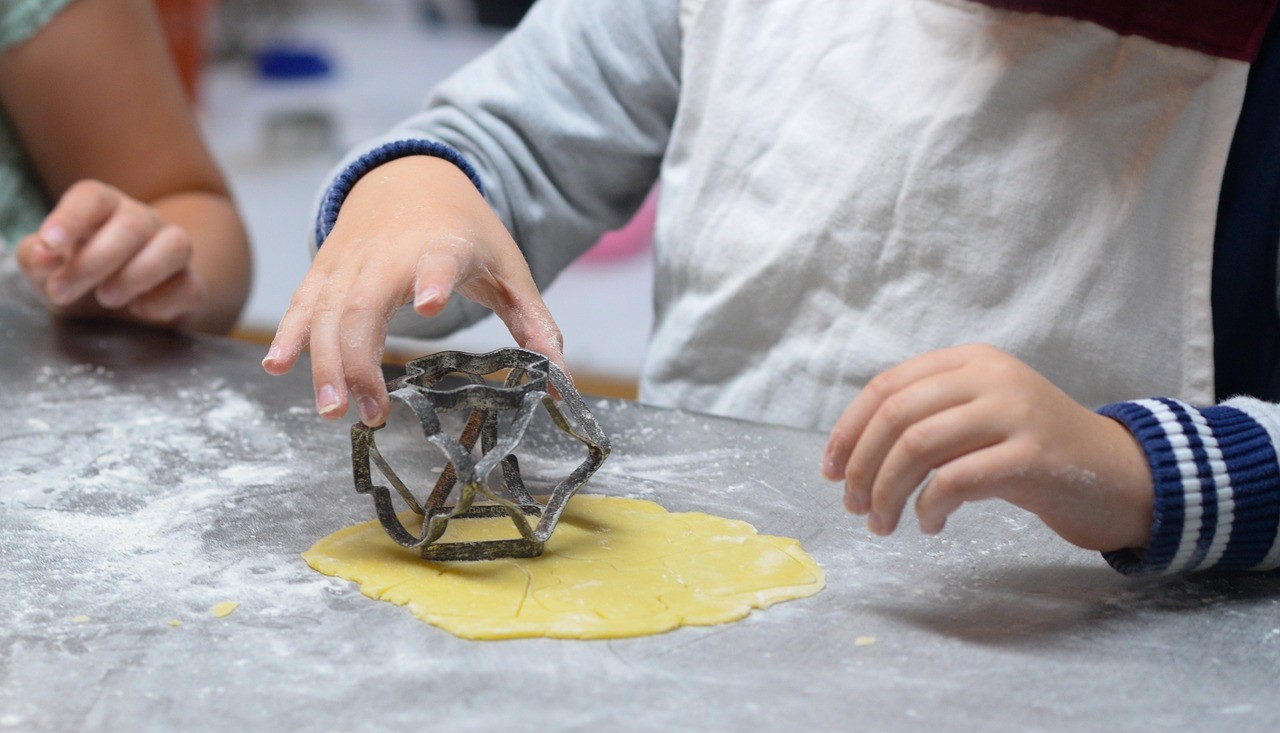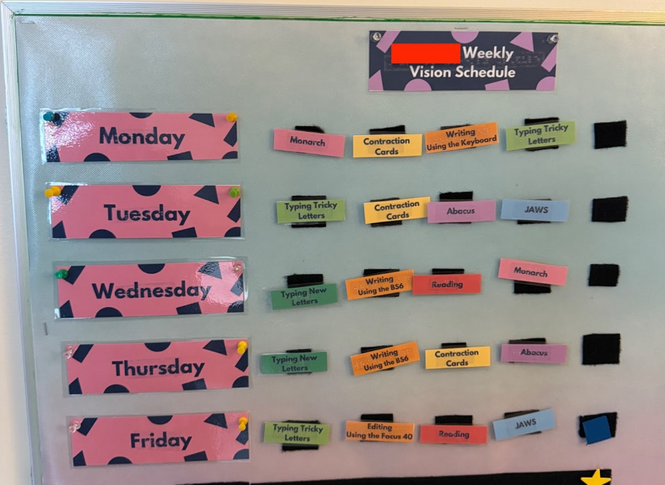Summer lends itself to easy recipes with farm fresh ingredients that everyone can enjoy from start to finish. Cooking promotes independence and a sense of accomplishment while helping the family with daily chores.
What are you trying to achieve?
When deciding to have a cooking activity, understand what skills are age appropriate and individualized to the strengths and needs of your child. Too many objectives can become frustrating and overwhelming. Start with making the cooking experience enjoyable and rewarding. Teach in small steps, most recipes can not be taught in one session.
Here are a few ideas:
- Younger children can have a sensory experience with fruit ice pops or puddings, just exploring the textures through touch and taste.
- Use a mixer for the first time. You can adapt it by using a switch so the child can independently turn it off and on. Here is the APH Power Select switch to adapt a mixer.
- Turn the oven on to the right temperature. For older children, have the oven/stove adapted in braille or with tactile buttons and teach how to safely use them. Braille label makers can be used or tactile stickers.
- Learn to measure ingredients with measuring cups or spoons that can be used for people who are blind or visually impaired.
- Make the recipe cards in their learning medium (visual, tactile/braille, auditory). For beginning readers who use print, you can make picture cards (real objects in the picture is best).
What to make?
Pick something your child enjoys eating and does not take a long time to make.
Sugar cookies are a treat that lends itself to using cut-outs and decorations that most children enjoy. Here is a sugar cookie recipe idea.
Pizza can be adapted to individuals. Can they make the dough? Chop up the veggies? Put on the sauce and cheese? Here are pizza recipe ideas.
Puddings, purees, and frozen pops can be simple and edible to most children who may have eating concerns (checking the recipes for any allergies of course). Here are fruit pop recipe ideas.
Fruit salad is always refreshing in the summer months and is great for practicing cutting skills.

Make it a two part learning experience by going to a farmer’s market or grocery store to gather the ingredients
Visiting a farmer’s market can teach an additional layer of skills while exploring all the fresh fruits and veggies of the summer season. When you teach where the food comes from and what time of the year they grow, it sets the stage for a better understanding of our food cycle.
Going to a grocery store can be overwhelming so know your child’s skill set and needs beforehand. Go at a time that is less busy and when the child is happy and eager to go. It may also be a good idea to break the shopping day and cooking day into two different days.

Use imaginative play with cooking
Children need to develop imaginative play and pretend cooking strengthens skills and their imagination. So when we aren’t creating real life experiences, promote pretend cooking by setting up an area in the home that is just theirs to “cook.”
It doesn’t have to be a fancy play kitchen; a few bins that have the essentials such as play foods and play cooking needs will work just as well.
Everyone can cook
No matter what your child’s skill level, cooking can be an activity that creates memories and skills that you will have with each other forever. Use the ideas shared here and make them your own by doing what feels best for you and your child.
Discover more articles about cooking:
Teaching Literacy and Math Skills Through Cooking
Cooking: Concept Development and Independence for 1st and 2nd Graders
Visual Recipes for Non-Readers





